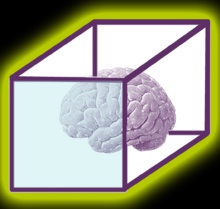
'Recognizing the need is the primary condition for design.'
Milton Glaser
Unit 2 - Investigating an engineered product
Learning aim A: Understand the performance requirements of an engineered product
A local engineering company has asked you to investigate an appropriate engineered product and to identify, outline and explain:
- why it is shaped as it is
- what its function is – whether it works
- what attributes would persuade users to choose the product and why
- technical attributes that make the product fit for purpose.
The product you investigate must have a minimum of two different components.
Please only use the unit specifications provided on this website as a guide, you must use your own internal verification proces at your centre in conjunction with B-tec EV services.
Microsoft Word document [108.0 KB]
Criteria - Each learning aim for each unit is split into higher and lower tier learning aims.
You should choose which level you are aiming at, see your tutor for guidance.
Always read the Pass, Merit and Distinction criteria carefully and ask any questions you need so that you secure your understanding of the what you are being asked to do as soon as possible.
Use the button below to complete the lesson on product analysis
Unit 2 - Coursework Scaffolded Template Documents (you can use and adapt these documents to aid your completion or delivery of the topic. as long as you hit the criteria and use correct technical language you can present your analysis in your own clear way)
Microsoft Power Point presentation [394.5 KB]
Microsoft Power Point presentation [903.1 KB]
Task 1:
Technical specification for an engineered product
Analyse the selected engineered product and produce a written technical specification for it. Your technical specification should be structured with the following headings:
Basic
-
Form
-
Function
-
User requirement
Advanced
-
Performance requirements
-
Material and component requirements
-
Ease of manufacture
- Ease of maintenance
- Legal and safety requirements
Example pages Unit 2 - LA A - Distinction Grade, In this example you will notice that the learner has hit all the available criteria for this Learning Aim (pass and merit criteria) so we can award this learning aim at a merit which is the highest this learning aim gives access to.
Using correct technical language is important so use the button below to find a non exhaustive list of technical terms and use them correctly when writing your own product analysis.
Example pages Unit 2 - LA A - Pass Grade (notice on page 2 how the Merit criteria is not addressed by the learner, this limits the mark awarded to Pass)
Learning aim B: Understand the selection of specific materials for use in the components that make up an engineered product
The manager of the local engineering company you are working for has asked you to discuss the materials used in its component parts, describing properties and qualities, environmental impact and possible alternative materials.
The product you use must have a minimum of two components.
Criteria - Each learning aim for each unit is split into higher and lower tier learning aims.
You should choose which level you are aiming at, see your tutor for guidance.
Always read the Pass, Merit and Distinction criteria carefully and ask any questions you need so that you secure your understanding of the what you are being asked to do as soon as possible.
Task 2:
Your report must cover:
Selection, use and impact of different materials in an engineered product
Disassemble the engineered product and then produce a written report that contains:
-
a brief description of two component parts in the product
-
the name, properties and qualities of the materials the each component is made from
-
environmental impact details for the materials used, including extraction/ processing and disposal after their useful lifespan
details of alternative materials that could be used in the product.
Example pages Unit 2 - LA B - Distinction * Grade, In this example you will notice that the learner has hit all the available criteria for this Learning Aim (pass, merit and Distinction criteria) so we can award this learning aim at a merit which is the highest this learning aim gives access to.
Using correct technical language is important so use the button below to find a non exhaustive list of technical terms and use them correctly when writing your own product analysis.
Example pages Unit 2 - LA B - Merit Grade (notice on page 2 how the distinction criteria is not addressed by the learner, and the merit content is of a lower quality than the D* example e.g. the parts have not been labeld corectly etc. limiing the mark awarded to Pass)
Learning aim C: Understand the selection and use of manufacturing processes in an engineered product
The manager of the local engineering company you are working for has asked you to discuss manufacturing processes to determine which ones were used, and why, during the manmufacturing of the product's components.
The product you use must have a minimum of two components.
Criteria - Each learning aim for each unit is split into higher and lower tier learning aims.
You should choose which level you are aiming at, see your tutor for guidance.
Always read the Pass, Merit and Distinction criteria carefully and ask any questions you need so that you secure your understanding of the what you are being asked to do as soon as possible.
Task 3:
Research the engineered product you have been given and then produce a written report detailing the production processes used to manufacture the product’s components. The report should include the following information:
- A description of the processes used
- Why these processes were selected, with reference to the manufacturing needs of the product
- The relative impact on the environment of the processes used, including energy, resources, waste production and pollution
A summary that weighs up the advantages and disadvantages of each process, based on the information provided in the earlier sections of the report
Example pages Unit 2 - LA C - Distinction * Grade, In this example you will notice that the learner has hit all the available criteria for this Learning Aim (pass, merit and Distinction criteria) so we can award this learning aim at a merit which is the highest this learning aim gives access to.
Using correct technical language is important so use the button below to find a non exhaustive list of technical terms and use them correctly when writing your own product analysis.
Learning aim D: Understand the quality issues related to an engineered product.
The manager of the local engineering company wants you to explain the reasons for quality-control (QC) checks and quality assurance (QA) systems. He would lile you to record what checks should be made on your selected product and how these checks could improve quality.
Criteria - Each learning aim for each unit is split into higher and lower tier learning aims.
You should choose which level you are aiming at, see your tutor for guidance.
Always read the Pass, Merit and Distinction criteria carefully and ask any questions you need so that you secure your understanding of the what you are being asked to do as soon as possible.
Example pages Unit 2 - LA D - Distinction * Grade, In this example you will notice that the learner has hit all the available criteria for this Learning Aim (pass, merit and Distinction criteria) so we can award this learning aim at a merit which is the highest this learning aim gives access to.
Using correct technical language is important so use the button below to find a non exhaustive list of technical terms and use them correctly when writing your own product analysis.
Example pages Unit 2 - LA D - Pass Grade (notice on page 2 how the distinction and merit criteria is not addressed by the learner, and the merit content is of a lower quality than the D* example e.g. analysis and evaluation are not communicated limiting the mark awarded to Pass)

